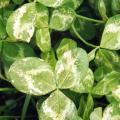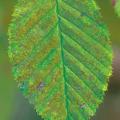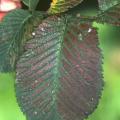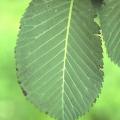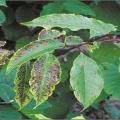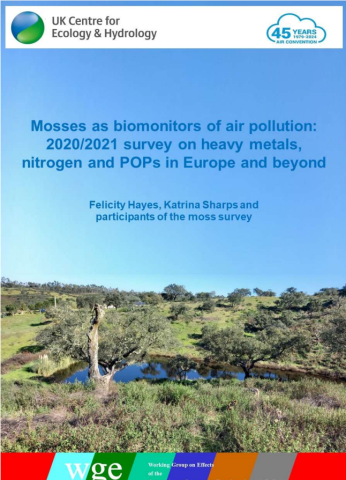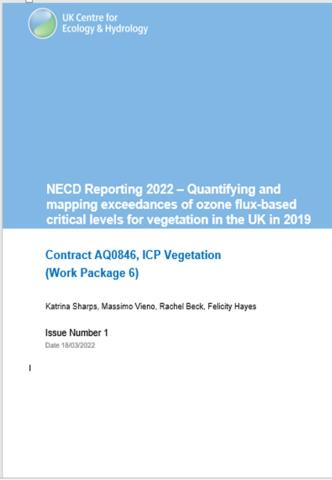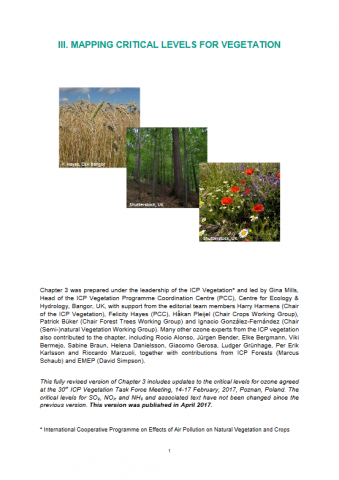Ozone pollution enters leaves through small pores on the leaf surface and causes damage to leaf cells.
Interveinal leaf stippling
Ozone damage becomes visible on the leaf surface as small pale yellow, cream or bronze pin-head sized blotches between leaf veins. In severe cases, this spotting (known as “stippling”) can join together to cover large areas of the leaf surface. For example, cream spottting can be seen on clover (Trifolium repens) leaves (a), while bronze stippling can be found on hornbeam (Carpinus betulus) leaves (b).
Damage on upper leaf surface
Leaf spots (stipples) appear first on the upper surface and as damage worsens may be found on both sides of the leaf. For example, while the upper surface of the wych elm (Ulmus glabra) leaf (c) shows severe interveinal stippling, there is no damage to the lower surface of the leaf (d).
Leaf age
Older leaves (towards the base of stems and branches) are usually more affected than younger leaves, as they have been exposed to ozone for longer periods. For example, older leaves show more evidence of ozone damage in black cherry (Prunus serotina) trees (e).
Leaf yellowing
The development of spots on the leaf due to ozone damage can be followed by leaf chlorosis (yellowing or paling of green plant tissue), particularly on older leaves. However, leaf yellowing can also be caused by many other factors, for example, mineral deficiencies and natural leaf aging. Care must be taken if recording ozone damage with chlorosis as the main symptom, for example, is it towards the end of the growing season, therefore leaves are aging naturally?
Photos courtesy of: G. Mills (a); Innes et al. (2001) (www.ozone.wsl.ch) (b&e); M. J. Sanz and V. Calatayud (www.ozoneinjury.org) (c&d).
